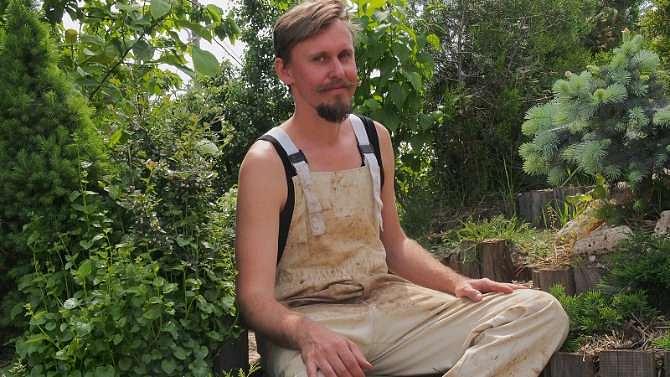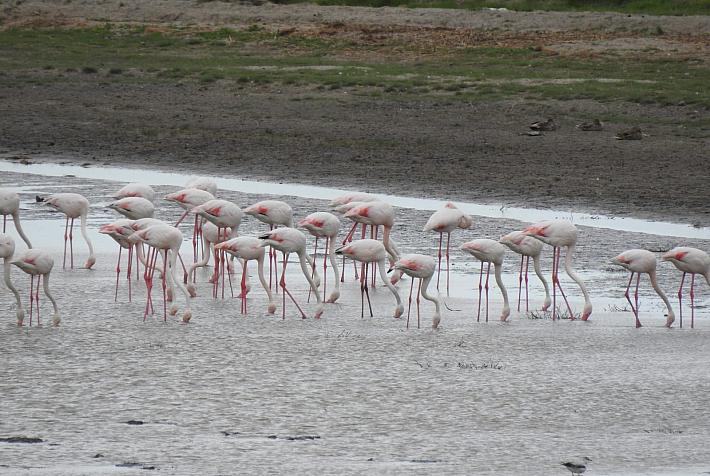Grzegorz Gorski’s journey from Oxford to creating straw-bale houses in Romania

Grzegorz Gorski is not the typical behind-the-desk architect. His work overalls will testify for that.
It’s only the beginning of May, but Grzegorz’ skin is already tanned: the result of working outside, in the sun. He designs and builds straw-bale houses. They’re energy efficient and very well insulated. Grzegorz uses the same natural materials our grand grandparents used when building their houses. The techniques, however, are new.
The young architect is now working on a house in Eastern Bucharest, somewhere behind Colentina Road. As soon as you escape the main road, filled with car workshops, gambling places and Asian restaurants, you enter some narrow streets where everything looks village-like.
Grzegorz has just received a delivery of materials and he's spelling his name to the guy who brought them: G-O-R-S-K-I. “Polish name, right?” He wears overalls, dirty from working with earth and mud. He also wears a Dali-like moustache, but, unlike the Catalan painter, Grzegorz’ moustache is blond. “Too pity that the moustache symbol is everywhere nowadays, but nobody wears it anymore.” He comes to the construction site every day, sweating side by side with the workers. It is a new technology, so he needs to watch the whole building process very carefully. Besides that, he likes being outside, in nature. When he was a kid, he used to take long trips in the mountains with his dad, in the South of Poland.
The structure of the new Bucharest house was built one year ago. Grzegorz and his team are now working on the cob walls - a mix of clay, sand and straw - at the ground floor. The north wall will be made out of straw bale. Upstairs they will use light clay, which has more straw and a little bit of earth. The roof will be covered with earth, mixed with keramzit, which is light clay. Plants will be growing on the roof: a green roof.
The sun is quite strong, so Grzegorz is wearing a baseball cap, with the “Ecovillage” label on it. He just returned from the Republic of Moldova, where he collaborates on a project called Ecovillage, initiated by an American - Moldovan couple. Grzegorz helps them build an ecological center. He taught people in the village how to use this technology and on local materials. He spent about 10 days with them, teaching them several techniques. Afterwards, they continue building the ecological center by themselves. Grzegorz also learns from them. Some of them are builders and have experience with these materials. In Moldova, they have been mixing earth with straw for many years. “It’s like an exchange. I show them what I know and they teach me what they know.”
Grzegorz, who is 35, first heard about this building technique at Ecobuild, an international building fair in London. His inspiration came from a presentation of Barbara Jones, the founder of Straw Works. She discovered straw bale building in 1994 and knew she had found her true path. An advocate of natural building materials, Barbara has often argued with engineers and building inspectors because of her unusual choice of materials and techniques.
Back then, Grzegorz was working as an architect in Oxford, a city he very much liked. He had a house with a small garden and lots vegetables. He even built a pond in his yard, and brought fish. Oxford offered plenty of beauties: a view of the Thames, lots of parks, places to cycle, exhibitions. But working in an office all day long was not that exciting for Grzegorz. So when he heard about this new technique during Jones’ presentation, he started researching. Instead of using materials that have high carbon imprint, which require much energy, this technique was using materials that absorb the CO2 from the air. The energy consumption is very low. It all made sense for Grzegorz. He quit his job and decided to move to Romania, his wife’s home country. He founded his company here: Safe Earth Design.
The house he is working on will host two families. They decided for this technique, as it is healthier and cheaper. The air quality is much better, and it allows for the diffusion of vapors. The biggest problem with straw-bale houses is the water. The house needs good hydro insulation from the bottom and from the top. Grzegorz implements lime plasters on the outside, but it could also be wood paneling. It depends on the client’s wishes.
Grzegorz likes to experiment and create new recipes based on natural materials. “I read many books about natural building, sometimes I change the methods and see what happens.” Last year he did plenty of testing. His wife has a family house in Slanic Prahova, a spa town with salt lakes in central Romania. Grzegorz had his base there, a sort of laboratory. There, he made some 50/50 cm plates on which he put different layers, like you put on a house. He played with colors and different techniques. “There is this Moroccan lime plaster Tadelakt that is used for bathrooms, as it is very resistant to water. It’s very beautiful, like marble, but you can shape it into whatever shape you want. You are not limited to flat surfaces. You can shape even bathtubs and window sills that are more rounded.”
Grzegorz doesn’t have a fixed image of his ideal house. He knows he wouldn’t like a huge house. “I would like to have what is necessary for the family. People spend most of the time outside the house, so you just need a base to sleep and to cook. In the summer, you can cook outside. I would like to have a garden and also a winter garden, a greenhouse. It could be on the south part, so you can stay in the winter days in a warm place.” He now lives in Bucharest, but he would like to stay somewhere in the nature, in a village close to Bucharest or a bit further.
After our talk ends, Grzegorz returns to his work: mixing materials, preparing the foundation. The sun is still high, but the trees in the yard and the house are there to offer shadow and relief. Some hundreds of meters away, you’re back on the Colentina Road, with its city chaos and no protection against the sun.
By Diana Mesesan, features writer, diana@romania-insider.com
(photo by Diana Mesesan)











